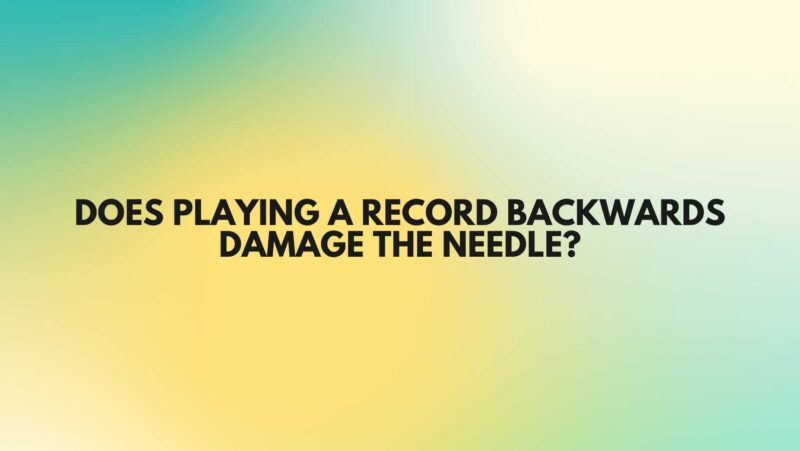Vinyl records, celebrated for their analog warmth and nostalgic appeal, have captured the hearts of music enthusiasts worldwide. Yet, the practice of playing a record backwards has sparked curiosity and questions regarding its potential impact on the turntable needle, or stylus. In this comprehensive guide, we will delve into the mechanics of vinyl playback, explore the effects of playing a record backwards, and evaluate whether it poses a risk to the turntable needle.
Section 1: The Mechanics of Vinyl Playback
To grasp the potential effects of playing a record backwards, it’s essential to understand how vinyl playback works. Vinyl records consist of grooves that encode audio information, and a stylus (needle) traces these grooves, converting vibrations into audible sound. Typically, the stylus moves from the outer edge of the record toward the center during playback.
Section 2: Playing a Record Backwards: What Happens?
When a vinyl record is played backward, the direction in which the stylus tracks the grooves is reversed. This results in several key changes:
- Reverse Audio Playback: The audio on the record plays in reverse, effectively reversing the order of sounds.
- Pitch and Speed Variations: Playback speed and pitch may fluctuate during reverse playback because the grooves are designed for forward playback. This can lead to variations in pitch and speed.
- Increased Stylus Wear: Reversing a vinyl record can subject the stylus to increased wear, as it encounters resistance while tracking in the reverse direction. The stylus may experience greater friction and stress.
Section 3: Impact on the Turntable Needle
The impact of playing a record backwards on the turntable needle can vary:
- Stylus Wear: Reversing a vinyl record can lead to increased wear on the stylus. The stylus is not optimized for tracking in reverse, which can accelerate its wear and potentially shorten its lifespan.
- Potential Damage: Repeated reverse playback, especially without proper precautions, can potentially lead to damage or deformation of the stylus tip. This can result in degraded sound quality and potential harm to the record’s grooves.
Section 4: Best Practices for Playing Records Backwards
If you wish to explore reverse playback while minimizing potential harm to the turntable needle, consider these best practices:
- Use a High-Quality Stylus: Ensure that you are using a high-quality stylus that is suitable for your turntable model. A well-maintained and properly aligned stylus is less likely to experience excessive wear.
- Minimize Frequency: Avoid frequent reverse playback, as it can accelerate stylus wear. Reserve reverse playback for specific artistic or experimental purposes.
- Inspect the Stylus: Regularly inspect the stylus for signs of wear or damage. If you notice any issues, such as a bent or worn tip, replace the stylus promptly to prevent further damage.
- Exercise Caution: When playing a record backward, be gentle and avoid applying excessive force or pressure to the stylus and the grooves.
Section 5: Conclusion
Playing a record backwards can be an intriguing exploration of sound and creativity. However, it should be approached with caution. While occasional reverse playback is unlikely to cause significant damage to the turntable needle, it can lead to noticeable variations in sound quality and potentially shorten the stylus’s lifespan.
To preserve the longevity of your turntable and maintain sound quality, it is recommended to primarily play records in the standard forward direction. If you wish to explore reverse playback for artistic or experimental purposes, do so sparingly and with proper care to minimize wear and potential damage to the turntable needle.


